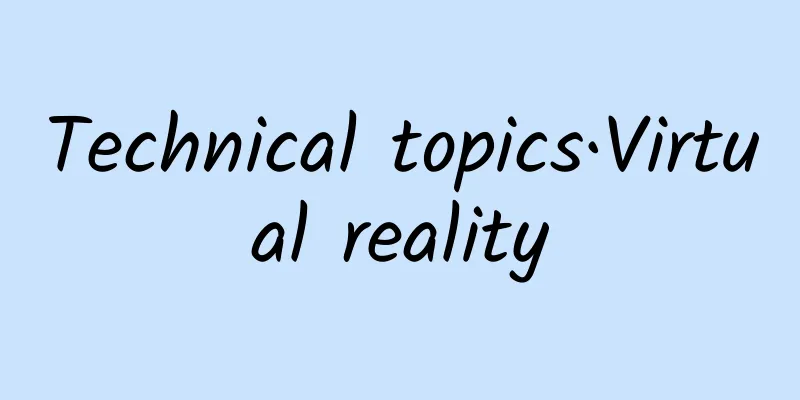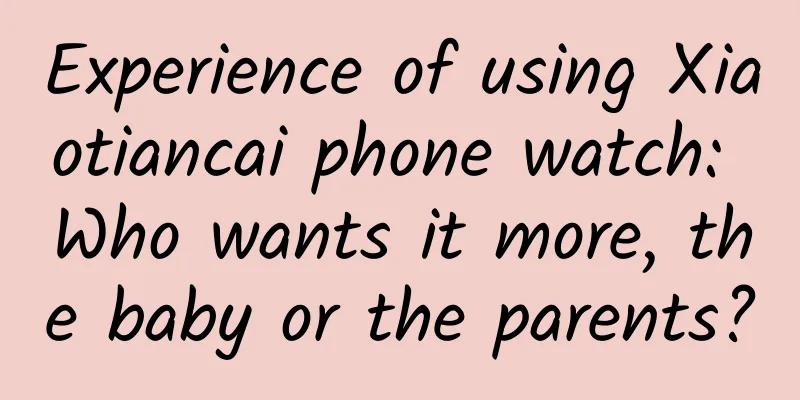Technical topics·Virtual reality

|
Li Wenxu, Editor-in-Chief of Pinkang Intelligence 2015 is undoubtedly the year of virtual reality, with virtual reality (VR) products pouring in. However, for consumers, VR is still very virtual and has not really entered people's lives. The reason is not that the quality of VR products is not good enough, but that VR product application content is scarce. For consumers, the most important thing is what they can do after purchasing virtual reality equipment. Obviously, no one could produce good content in 2015. In December last year, LeTV announced its VR strategy, which is a huge investment. With the concept of vertical integration of the value chain, it has connected VR content sources, platforms, and terminals. It will implement the "100 million fans coverage plan" and the "10,000 CP alliance plan". The fans here are not only fans of celebrities, but also fans of technology, sports and other content enthusiasts. For example, celebrity concerts. In 2016, more than 100 VR Live concerts will be filmed/broadcasted, an average of 2 concerts per week, covering the world's most mainstream languages such as Chinese, Europe, America, Japan, and South Korea. Also in December, Tencent officially announced the Tencent VR SDK and developer support plan. This is the first plan among the three BAT companies to move towards virtual reality. In March this year, Tencent will launch a head-mounted display device that integrates sensors and dedicated screens. In June, it will launch a portable host-style head-mounted display device with a battery. In the third quarter of 2017, based on the maturity of content ecology and technology, Tencent will develop mobile VR and all-in-one solutions. For developers, Tencent has released the Tencent VR Developer Plan, which includes platform/content ecology sharing promotion strategies, and covers advertising, copyright, download and other channel business sharing models. At the same time, it will import resources such as Tencent's social system, advertising system, and sales system. Tencent and LeTV's entry into the VR field will share the industry's profits and intensify the competitive environment. However, from another perspective, their entry has brought rich content to the VR industry, promoted the development of the entire industry, and developed more profit points. In my opinion, Tencent and LeTV will bring VR from virtual to real life after huge investments! Last year was the year of virtual brewing of VR, and this year will be the year of VR entering reality. #p#
Hangzhou Lipper Technology Technical Director Jin Bingwen With the growth of virtual reality, the traditional keyboard and mouse peripheral model may undergo certain changes, just like the virtualization of the keyboard on the mobile phone. Currently, the most mature ones are handles and fixed devices. Their built-in sensors and circuits are already mature products that can bring a more stable experience, but their portability will be worse. Other types of interaction methods, such as gesture recognition. If devices like Xbox Kinect and Myo wristband are well made, they will naturally give people a better interactive experience, but the technical difficulty is obviously greater. Speaking of technical limitations, Xbox Kinect can only be used indoors, and the effect is very poor outdoors. Multiple machines cannot be used simultaneously in one scene. The working distance is limited to 0.5m to 4.5m, and the hardware configuration requirements are relatively high. If connected to a PC, USB3.0 and an i7 CPU must be used. Myo is a device that uses electromyographic signals to recognize gestures. Therefore, due to the high noise and clutter of the bioelectric signal itself, the signal quality is very poor, and it is impossible to accurately track gestures. It can only classify gestures, and the current text input method with the help of a keyboard is very inconvenient. In addition, there are glove devices and voice recognition. From my point of view, glove devices are difficult to adapt to the hand shapes of many different people, inconvenient to wear, and affect the user's ability to do other things. They are usually expensive. Although voice recognition is also a mature technology, it is difficult to ensure the privacy of information input, and the operating system will also have a huge difference due to the change in method. It is difficult to say which interaction method will become the next generation trend, as each product has certain applicable scenarios. Judging from the current products, it is hard to say which one has completely won. #p#
Song Zijian, Founder of Beijing Weipao Technology Co., Ltd. | Postdoctoral fellow at Institute of Microelectronics, Peking University | Doctor at Simulation Center, Beijing University of Aeronautics and Astronautics VR virtual reality and smart hardware are currently hot areas. As a practitioner in related fields, the author simply expresses some opinions based on his professional background and personal experience, for reference only. VR technology is based on computer graphics and has been widely used in the field of military simulation decades ago, such as the flight simulator system for air force pilots. The wearable display (commonly known as VR glasses) that is now widely concerned originated from the helmet display HMD in the military simulation system. It was originally used with wired data gloves and combined with a semi-physical simulation system to simulate the operation of weapons in a real battlefield environment, such as pilots driving fighter jets. Among the three I features emphasized in virtual reality systems, two very important points are immersive and interactive. The author believes that the current VR system, combined with the development direction of intelligent hardware, must work hard on these two I. For example, wide field of view, high-resolution images without distortion, and stereoscopic display technology without dizziness are necessary means to improve immersion; at the same time, the interactive means of VR systems must be natural human-computer interaction (natural means such as somatosensory and voice). However, most of the traditional handles and remote control devices used in the so-called VR systems are incompatible. As the natural interactive input device of the VR system, the intelligent hardware must meet the requirements of high resolution (accuracy of capturing movements), low latency (latency is an important indicator affecting the human-computer interaction experience), small size (easy to wear), and of course low power consumption and low cost, which involves the user's entry threshold. The VR systems of the future will definitely develop towards high immersion and natural human-computer interaction. We believe that it will not be long before low-cost, miniaturized VR systems enter thousands of households. #p#
edit: Virtual reality devices received widespread attention at the 2016 CES conference, but from our initial experience, virtual reality products have not yet brought about epoch-making changes. Rather than opening a window, it is better to say that the window is temporarily closed and waiting for the next generation of revolutionary products to open all the doors and windows. There are many insurmountable problems from a technical perspective during the experience: dizziness, sense of reality, screen refresh rate, and the silly feeling of wearing such a large device. If there is anything that can improve the user experience, in addition to moving towards AR (augmented reality) and MR (mixed reality), a more natural way of interaction should be chosen. From the current situation, some existing non-game console-type products are more like transitional works, and they do not have the ability to completely occupy a part of the market. Various VR glasses and voyeurism completely occupy people's vision, instead of using people's time in a fragmented way like mobile phones. But we cannot ignore the significance it brings. Whether it is directly making a new product or transitioning from an existing product, this attempt is actively promoting the change of the times. In the foreseeable future, AR products such as Google Glass and products and directions such as gesture and voice recognition may eventually become mainstream along with VR. |
<<: Kingdee Cloud Developer Conference: Mobile work platform ushered in a year of explosive growth
>>: Google blocked 780 million low-quality ads last year
Recommend
Your brain works harder than you think to tell you the order of time
In our perception, time is an invisible and intan...
Are casual games on the sidelines? Breakout 2 is leading video games into the era of blockbusters
Screen: Sound Effects: operate: Plot: Experience:...
The strange structure of the elephant's body can actually prevent cancer? | Nature Trumpet
Welcome to the Nature Trumpet. In the past half m...
JD.com traffic has reached a bottleneck? 3 indicators and 5 factors to help you improve conversion
People often ask, which category is easy to do on...
How can newbies quickly become familiar with WeChat public account operations?
This article discusses four major aspects: famili...
Is Maiqiu'er's explanation of the residue reliable?
In response to the milk quality issue that has at...
A 20-year-old girl weighs 180 kg. She often eats 8 kinds of breakfast and it is difficult not to gain weight.
Obesity is something we really don't want to ...
Like a ball but not a ball? The "very basic problem" that has troubled the mathematical community for 30 years has finally been solved
Five mathematicians have not only solved a diffic...
PitchBook: Artificial Intelligence and Machine Learning Report, Q2 2024
On June 11, Mistral AI received US$640 million in...
WeChat iOS 8.0.6 official version released: Status adds time-limited reminders, Moments can forward videos
[[399977]] May 17 news: WeChat quietly launched t...
Chang'e 6 will head to the moon in early May!
Reporters learned from the National Space Adminis...
Marketing promotion methods | How to create private domain traffic?
Friends from different industries asked them how ...
Tik Tok live streaming and algorithm mechanism
With 0 fans and purely natural flow, how to achie...
How much does it cost to fill a tooth in a hospital: How to optimize Internet promotion?
SEO promotion is a common tool for corporate mark...









